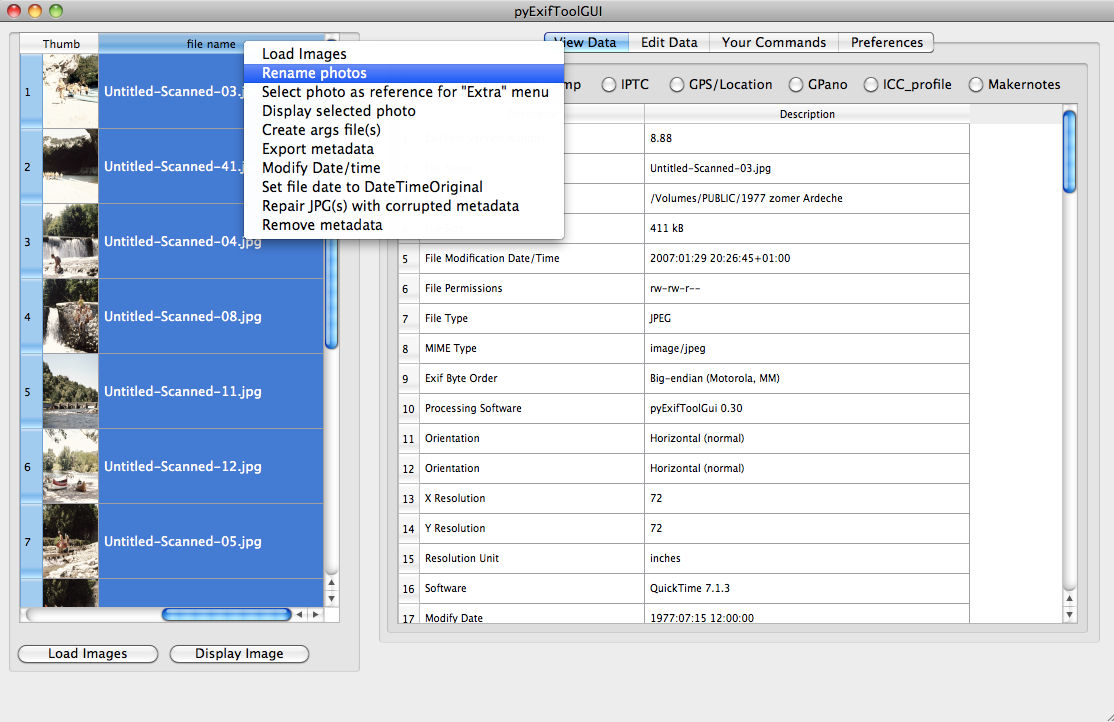

Here are the most common commands you can use with ExifTool:

You may also install it by cloning the ExifTool from GitHub. To check ExifTool version, type: $ exiftool -verĪs of writing this guide, we have installed Exiftool 12.50 version. You can now run ExifTool anywhere in your terminal by typing exiftool. You must have Perl installed on your Linux box before compiling. exiftool in the ExifTool directory or proceed to the next step if you want to install it system-wide.

Download the latest version from ExifTool package home page. You can compile and install ExifTool from the source on any Linux distro (including CentOS Stream). You can install ExifTool on Ubuntu using the apt utility. In this section, we'll be installing ExifTool on Ubuntu and other Linux distributions. In this guide, we learn how to install ExifTool on Linux and manipulate metadata of files. Also, if you need to quickly and safely copy, move, rename, extract previews or modify multiple images at once, ExifTool is what you need. For example, the metadata of photographs are the additional data like the name of the device, the resolution of the image, the location the image was taken at, the date of capture and modification and more.ĮxifTool supports several metadata formats including EXIF, GPS, XMP, GeoTIFF, Photoshop IRB, ID3, FlashPix. Your camera writes EXIF (Exchangeable image file format) and we'll be focusing on images in this article, but note that ExifTool can be used to modify the metadata of any file. Metadata are the additional data added to multimedia files. It's an open-source program for reading, modifying, and manipulating images, videos, audios, and PDF metadata. You may have come across ExifTool while searching for image recovery software.


 0 kommentar(er)
0 kommentar(er)
